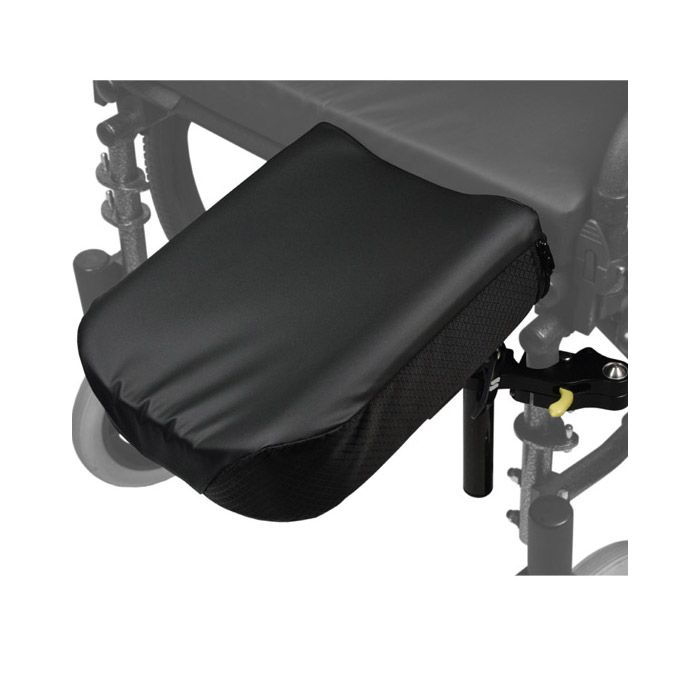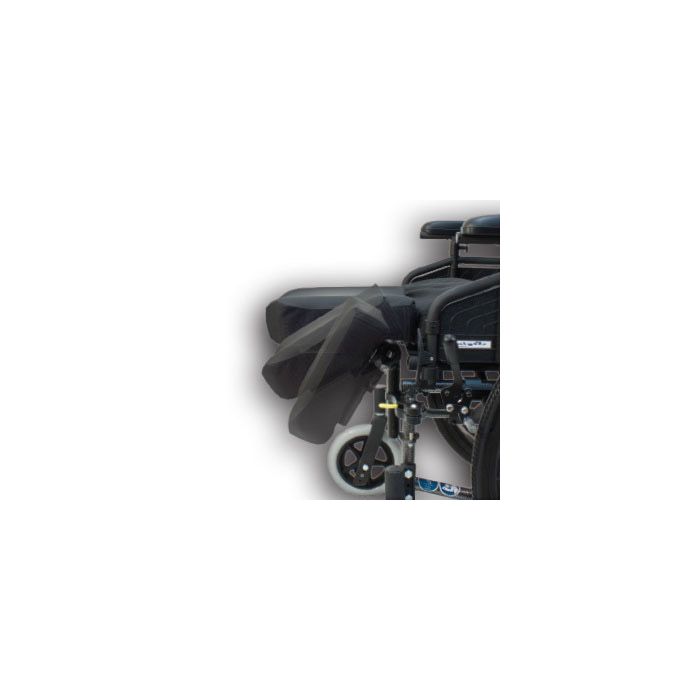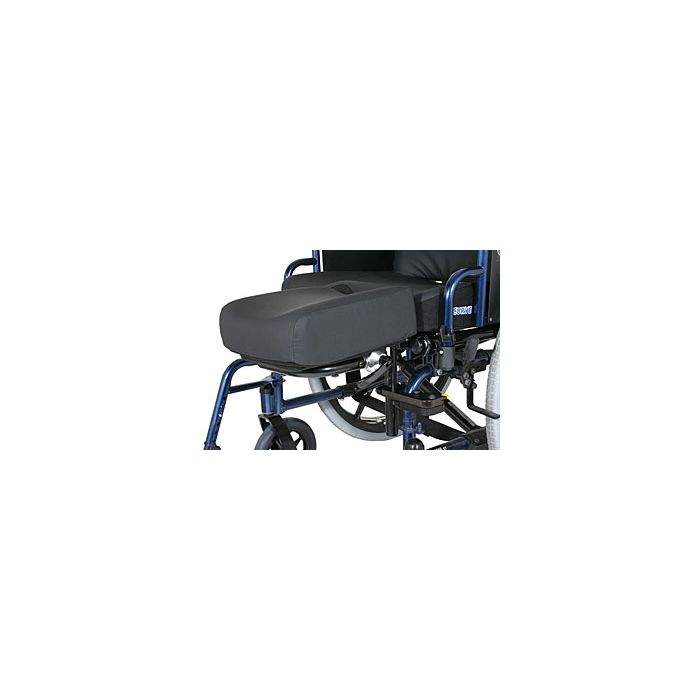People who have had a limb amputated need an excellent rehabilitation program as soon as possible and devices to help them function as independently as possible.
Wheelchair options can be overwhelming when choosing the finest wheelchair for amputees.
The good news is that we’re here to lend a hand by providing a detailed analysis of some of the best wheelchairs currently on the market, including a discussion of their salient features and advantages.
The consequences of losing a leg
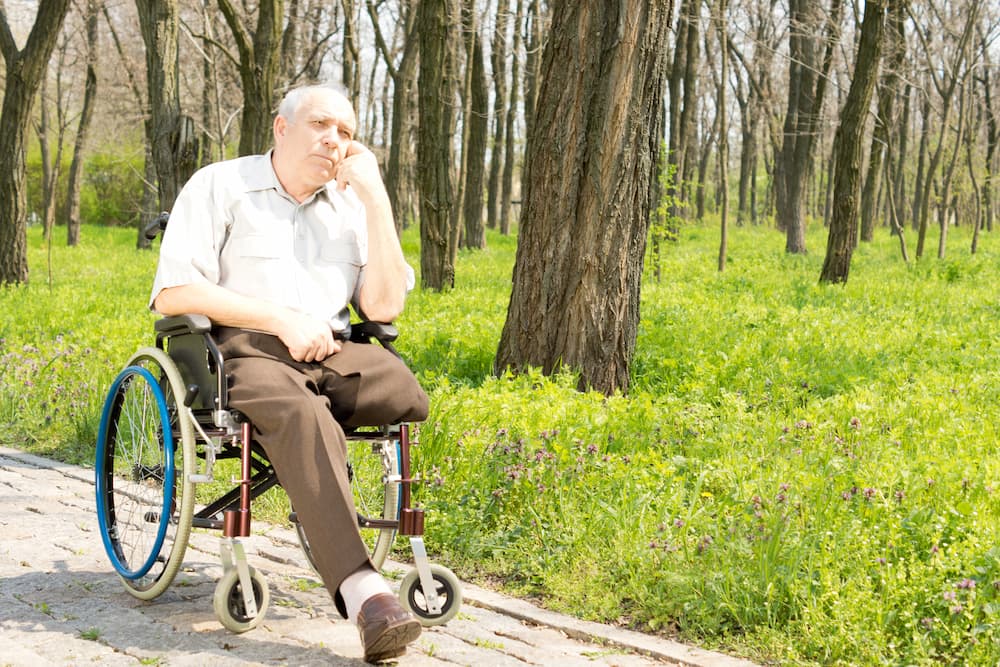
Physical consequences of amputation:
What happens physically may be obvious right away. For instance, losing a leg will make it impossible for a person to walk without support.
A person who has had multiple limbs amputated faces more difficulties than someone who has just had one limb amputated. These difficulties include pain, lifestyle modifications, and regaining quality of life.
However, due to the drastic alteration in a person’s physique, amputees may experience several other physical effects. The major one is Mobility and dexterity:
- A lower-limb amputation primarily reduces a person’s mobility, making it impossible for them to walk as they did before an injury or operation. The injured person will typically be able to utilize a prosthetic limb after receiving adequate treatment and rehabilitation.
- Losing an upper limb will also impact mobility, affecting balance.
- The injured individual may become more vulnerable to slips, trips, and runs into things and others.
- After an amputation, the fundamental activities of daily living will likely be significantly more challenging, if not impossible.
- Upper-limb amputees who have lost their dominant hand or arm will likely struggle with manual dexterity-demanding tasks; thus, they will need to learn how to utilize their formerly non-dominant limb to compensate for this. For instance, mastering the ability to write with their weaker hand would be a particularly challenging talent transfer.
Amputees may experience these effects after amputation.
- Stump and phantom limb pain
- Muscle contractures
- Infection
- Deep vein thrombosis
Amputation prevalence:

More than 185,000 amputations are conducted annually in the United States, where limb loss affects 2 million people (National Limb Loss Information Center).
“Vascular disease is to blame for 82% of amputations in the United States.” The upper limbs are amputated in over 70% of trauma-related amputations.
Worldwide, 57.7 million people were living with limb amputations brought on by trauma in 2017.
By 2050, it is expected that 3.6 million people in the United States will have amputated their legs, up from 1.6 million in 2005. The medical profession has been raising awareness of vascular disorders like diabetes mellitus to reduce this number.
It is also known that people with diabetes mellitus who have already had a lower leg amputated have a 55% probability of also needing to have a limb amputated over the next two to three years.
Should you choose a manual or electric wheelchair?
Generally, there are two categories of options:
- Manual wheelchairs
- Electric wheelchairs
The absence of a motor distinguishes a manual wheelchair from an electric wheelchair. A manual wheelchair requires the user or another person to put in physical effort.
Models with electric motors include wheelchairs, which have built-in motors powered by rechargeable batteries. On the sleeve, there is an easily accessible electric control that allows it to move, which is unavailable in a manual wheelchair.
Amputations necessitate a wheelchair due to limited mobility
Manual wheelchairs are ideal for new or temporary wheelchair users.
Self-propelled wheelchairs might be unsafe or uncomfortable in some settings. Pushing the chair’s wheels requires upper-body power for old or infirm people. Upper-body paralysis and cardiovascular disease make it more difficult.
Loss of limbs and arthritis in one or both hands also make self-propulsion difficult. Specifically, children under five have issues with manual wheelchairs. Size and weight affect a toddler’s ability to move the wheels.
A quadrilateral amputee who needs a wheelchair and has upper extremity amputation or limb deficit will require a motorized wheelchair. A joystick can be utilized if the user has had their unilateral upper extremity amputated.
In the case of a bilateral amputation, a residual limb that is appropriately mounted may have a sufficient range of movement to allow for joystick control. Other driving techniques, such as a head array, may be suggested if a joystick cannot be utilized.
When employing a seat that can drop to almost floor height, it may be possible for a quadrilateral amputee to make unassisted transfers into and out of a wheelchair base.
Impact of amputations on wheelchair seating
In contrast to having no weight bearing on one or both feet, a person with a below-the-knee amputation or limb shortage will have complete contact across the buttocks and posterior thighs.
To reduce the danger of pressure sores, it is crucial to ensure that the general pressure distribution is acceptable.
Below the knee, residual limb support can be used to help spread pressure, make the area more comfortable, and reduce swelling.
A person with an above-the-knee amputation may feel more pressure under the ischial tuberosities if there isn’t enough pressure distribution in the back of the thighs. As a result, the wheelchair user will also be less stable and need more pelvic postural support.
A custom orthotic is frequently required for the wheelchair seating system to offer proper postural support, balance, and pressure distribution. Amputee support chairs are also beneficial in providing support.
Let’s talk about some of the best wheelchairs you can use. Before we begin, consider the Swingaway amputee attachment.
Swingaway amputee attachment
The Comfort Company’s Swingaway Amp attachment is a specially placed amputee pad that can be put on any wheelchair quickly and easily.
The Swingaway Amp is a fully adjustable support attachment for amputees that can be used with any wheelchair cushion.
Patients can quickly and simply transition into and out of their wheelchairs thanks to the new swingaway function, which moves the attachment out of the way. The attachment has an incontinence-proof cover and is foam cushioned for comfort.
Wheelchair Options for amputees
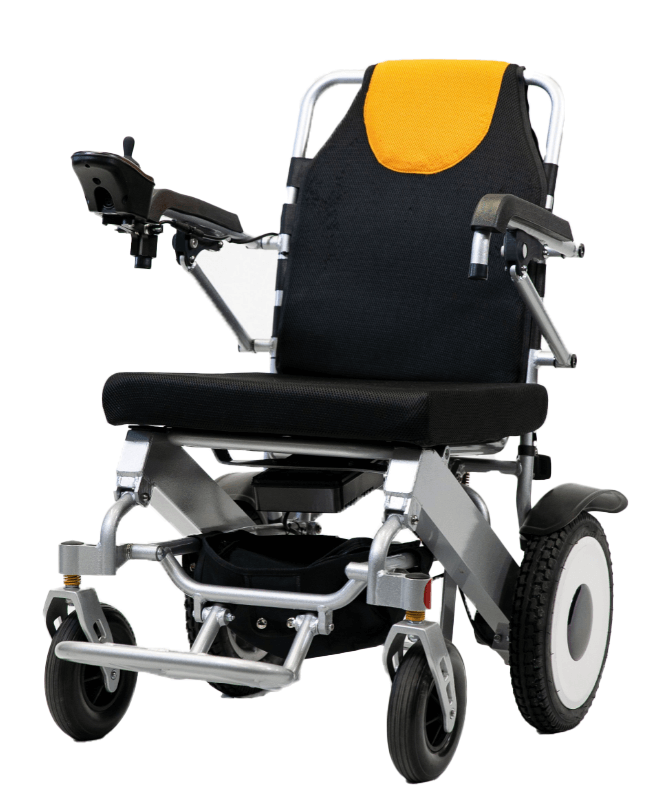
The Special Edition (SE) folding power wheelchair model supports passengers weighing up to 300 pounds. It is made of a strong, lightweight aluminum alloy.
The FDA has authorized the SE Chair as a mobility aid. This lightweight, portable power chair only weighs 50 pounds, making it easy to move, travel, and store.
The joystick controller may be put on the left or the side for ease of use and operation with raisable and height-adjustable armrests.
Features:
Price Warranty Top Speed: Distance on full charge: Weight capacity: Chair weight with battery: Battery: Ground clearance: Seat width: | $1,899.00 Available 5 mph 15 miles 300 lbs 50 lbs Lithium-Ion 3.5″ 18.5″ |
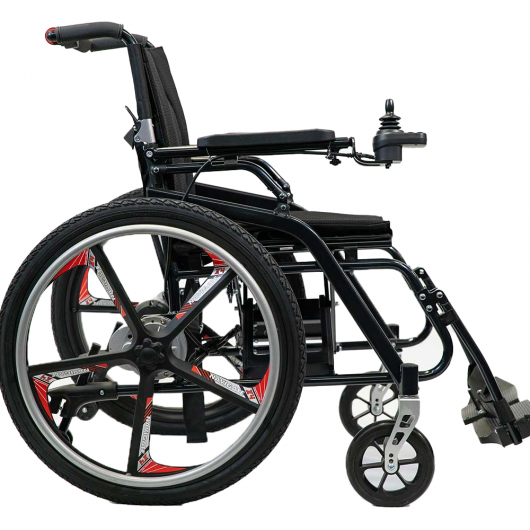
Model H’s Special Edition (SE) folding electric wheelchair is constructed of a strong, lightweight aluminum alloy and can hold up to 260 pounds of passenger weight.
Folding occurs with a single button push, so the FDA has authorized the SE Chair as a mobility aid. This portable power chair only weighs 39 pounds, making it easy to move, travel, and store.
The joystick controller may be put on the left or the side for ease of use and operation with raisable and height-adjustable armrests.
Additionally, this Special Edition model has 22-inch rear wheels for improved performance on all terrains.
Features:
Price Warranty Top Speed: Distance on a full charge: Weight capacity: Chair weight with battery: Battery: Ground clearance: Seat width: | $2,099.00 Available 5 mph 8 to 13 miles 260 lbs 39 lbs Lithium-Ion 3.50″ 18″ |
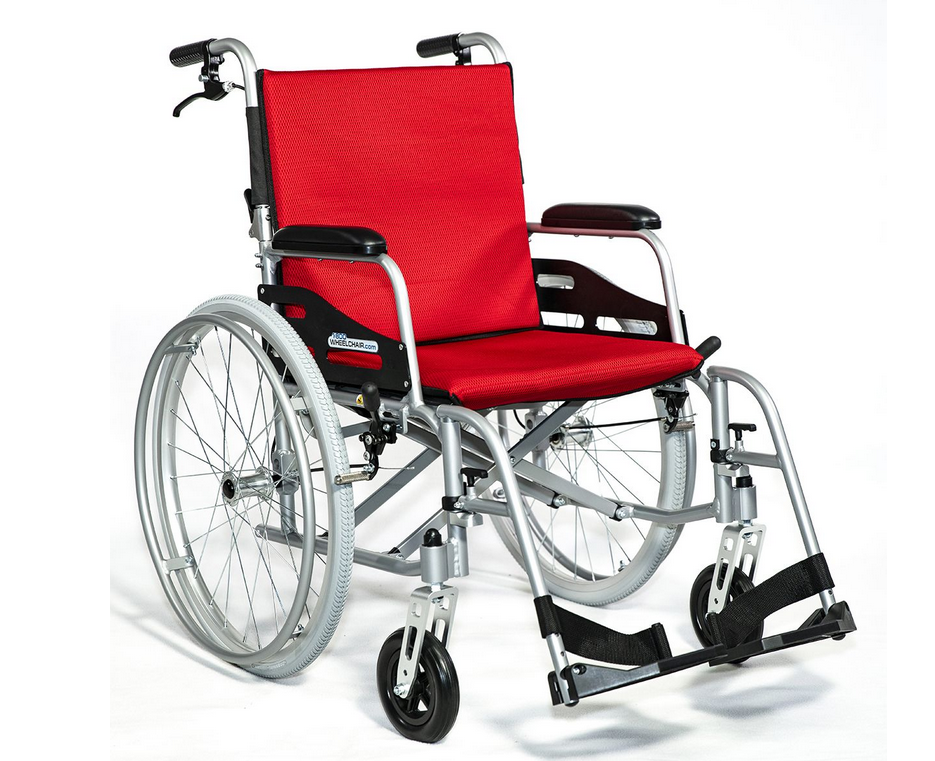
The Featherweight 13.5 lbs Wheelchair is the world’s lightest wheelchair, making it your best option.
This lightweight chair is made from brand-new materials and increases the standard for wheelchairs’ exceptional lightweight. It is simple to push and move, and nearly anybody can lift it into their vehicle, truck, or SUV. Additionally, the Featherweight chair collapses into a small package for simple transportation.
It takes less than a minute to unfold and attach the wheels once you get to your location. Therefore, the Featherweight 13.5 lbs Wheelchair is the best option if you’re seeking a wheelchair that is exceptionally light and portable.
Features:
Price Warranty Wheel locks Shipping cart Weight capacity. Shopping cart Storage seat Bicycle-style locking brake levers | $549.00 Available
250 lbs |
In this video, a young woman who had her left side below the knee amputated is trying various wheelchairs and describing which makes her most comfortable and which one doesn’t.
In this video, a woman was battling with manual wheelchair problems until she received a power wheelchair, which ultimately improved her life.
What other people are saying:
- A person is looking for electric wheelchairs that are flexible enough for an active quad amputee. He got a Permobil For M 5 and a quad bike as a recommendation. Check out the link for more details.
- The wife told her husband’s story about how a car accident amputated his left leg and paralyzed his left arm. And how many challenges did he face while using both manual and electric wheelchairs?
An amputee needs help finding a better wheelchair for outdoors and got Ti Lite as a recommendation.
Before you go
After purchasing a wheelchair, you will need a highly comfortable wheelchair cushion. Wheelchair cushions provide extra support because they are designed to keep you in the proper sitting posture. Visit our article to learn more about the best wheelchair cushion.

